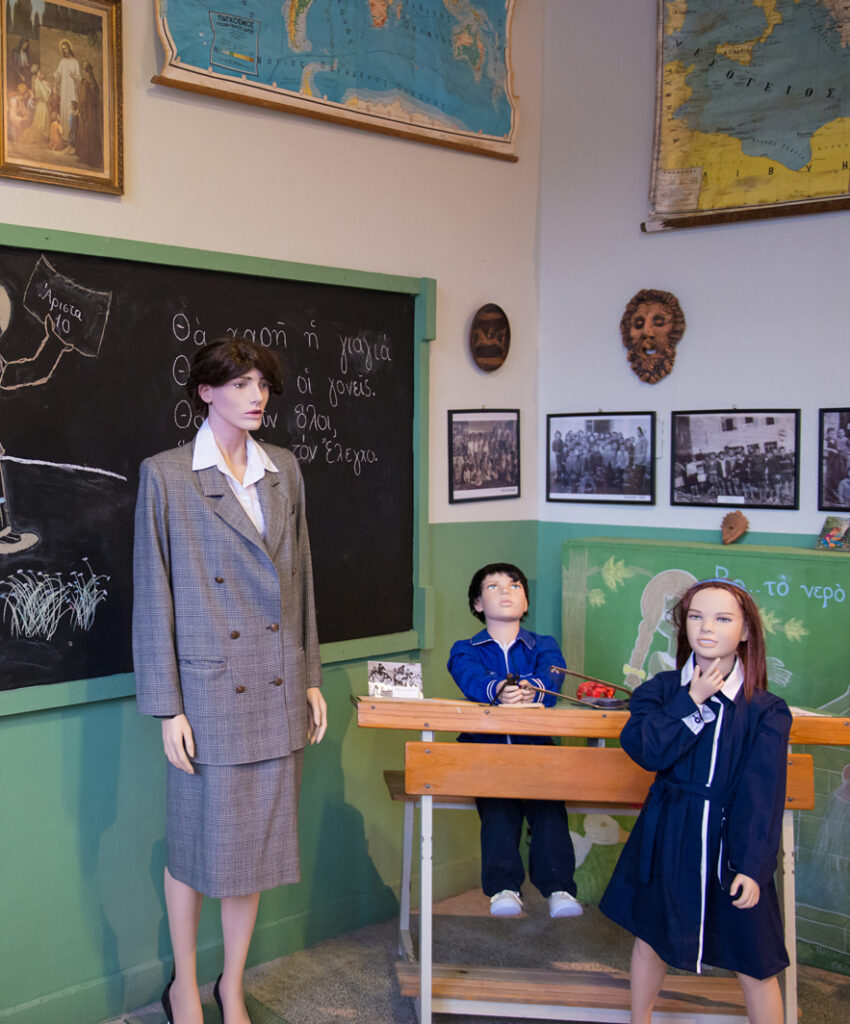
The heating of the classroom was done with a wooden stove that was placed somewhere in the center. The students who were close to it, were considered lucky and privileged. The students themselves took care of the heating of the classroom. Each child had the obligation to carry a stick every morning in its bag …

There was always a wooden floor abacus in the smaller classrooms. With the abacus, as it used to be called, the students learned basic mathematical operations, such as addition, subtraction, and multiplication. The abacus is the forerunner of calculators and computers.

The freshly painted blackboard in the beginning of each school year was the hallmark of each classroom. During breaks, one of the classmates was in charge of cleaning it with a damp sponge and refill the chalks supply. Today, with the evolution of technology, we are discussing of replacing the blackboard with new interactive whiteboards …

The teacher had – apart from absolutely positive characteristics – a little «softer role» than that of a male teacher. Although, since the most powerful educational tool was the rod, if a teacher was somewhat friendly with the students, parents were expressing their fears that it might harm the children! Usually, female teachers took …

This is exactly how the teacher of that time was, who was a representative of knowledge. his educational tools were books, chalkboard, abacus, and maps. However, his main tool, especially for the education and compliance of the students, was the rod. The rod was the fear and terror of all students, since every devilment, real …

The classrooms were full. The walls were decorated for the most part with pictures of heroes (Karaiskakis, Kolokotronis, etc.). On National Holidays the pictures were crowned with laurel branches. The maps were the main feature of the classroom. Maps of geography, natural history, history, mythology etc. The image of Jesus Christ was always in the …
